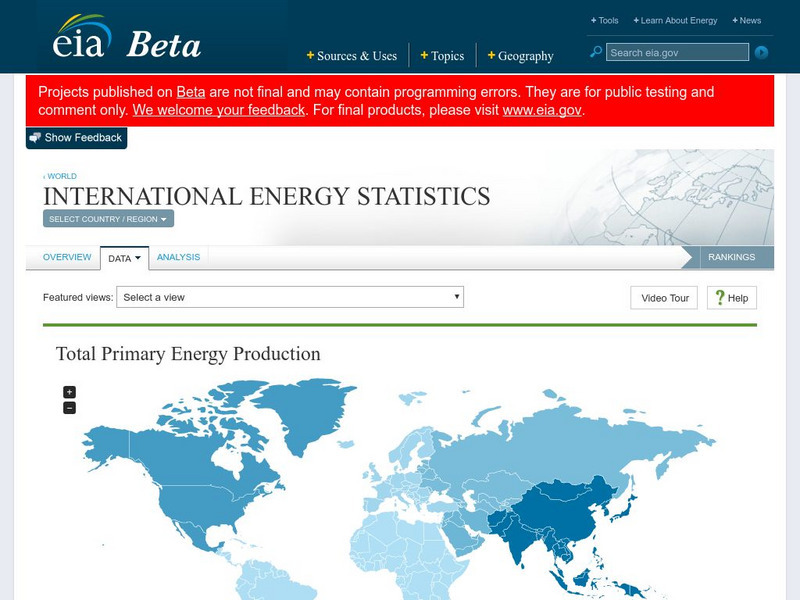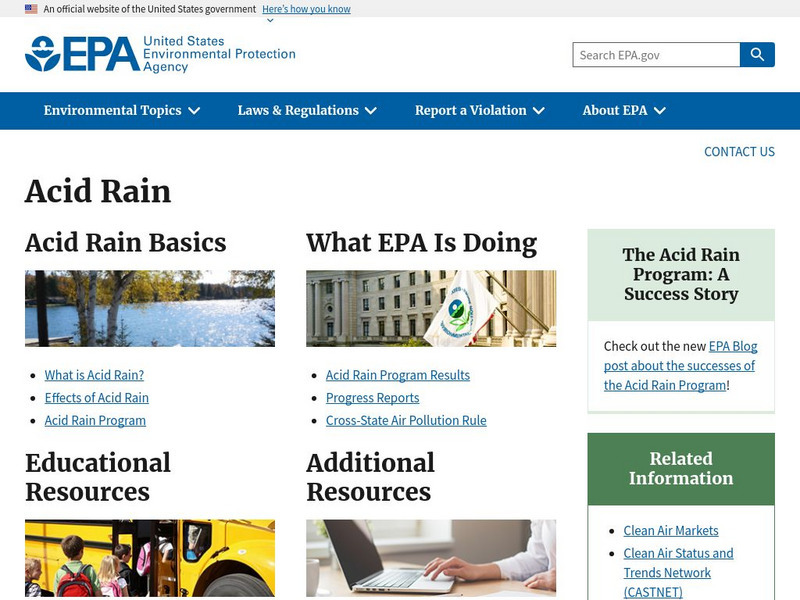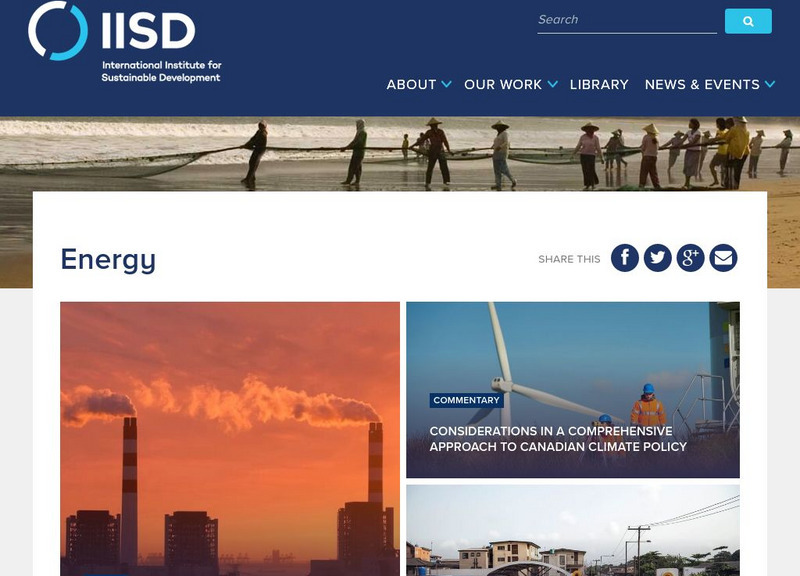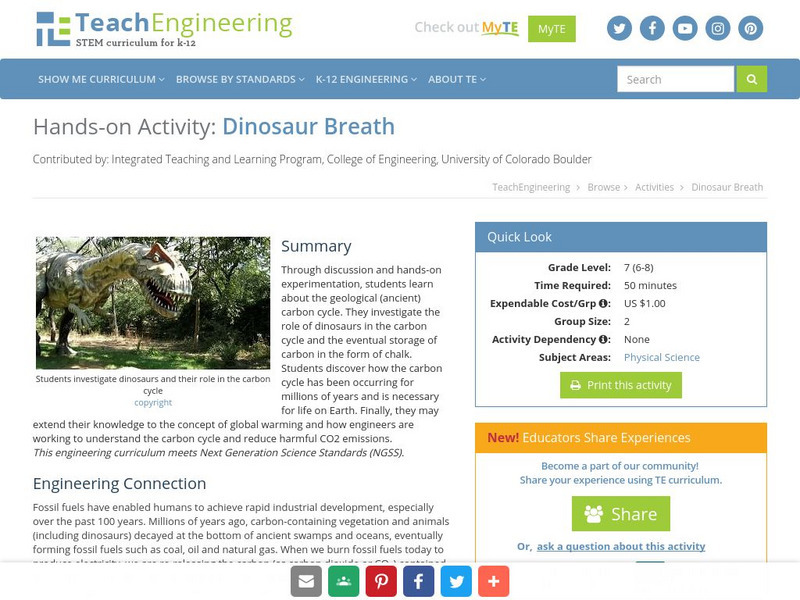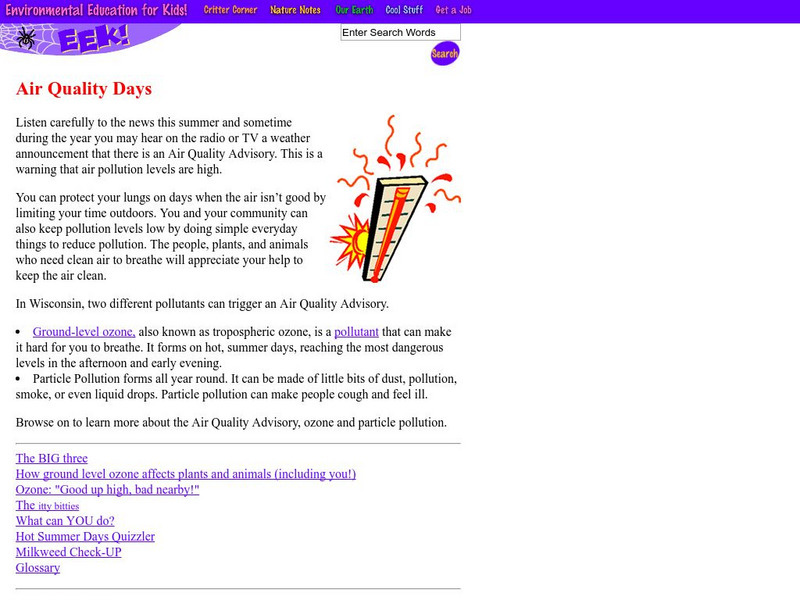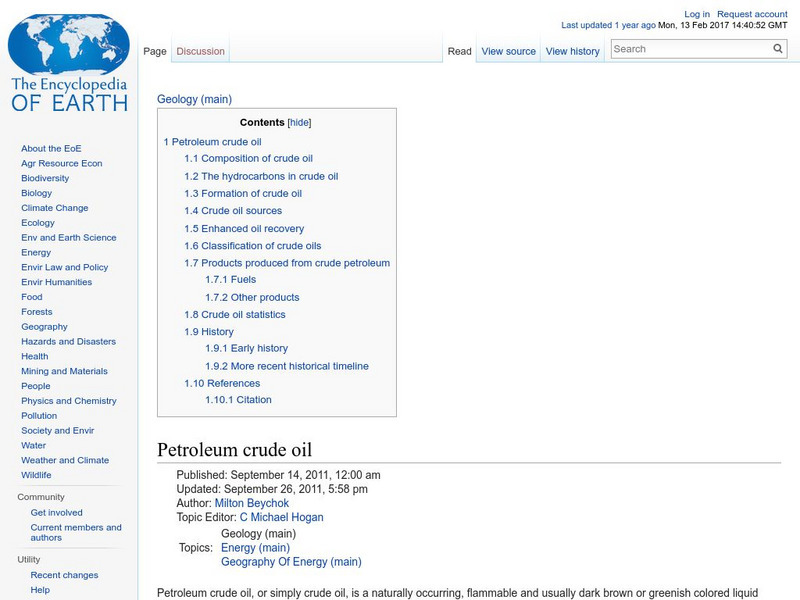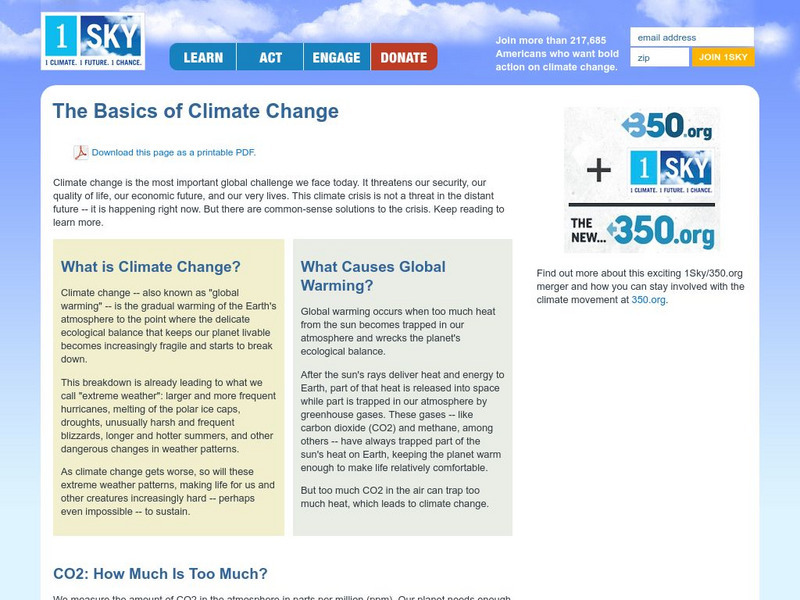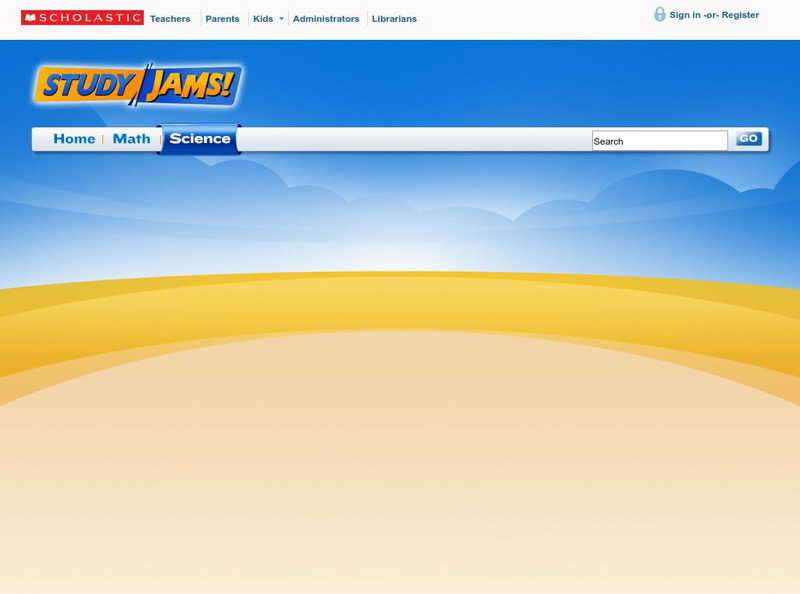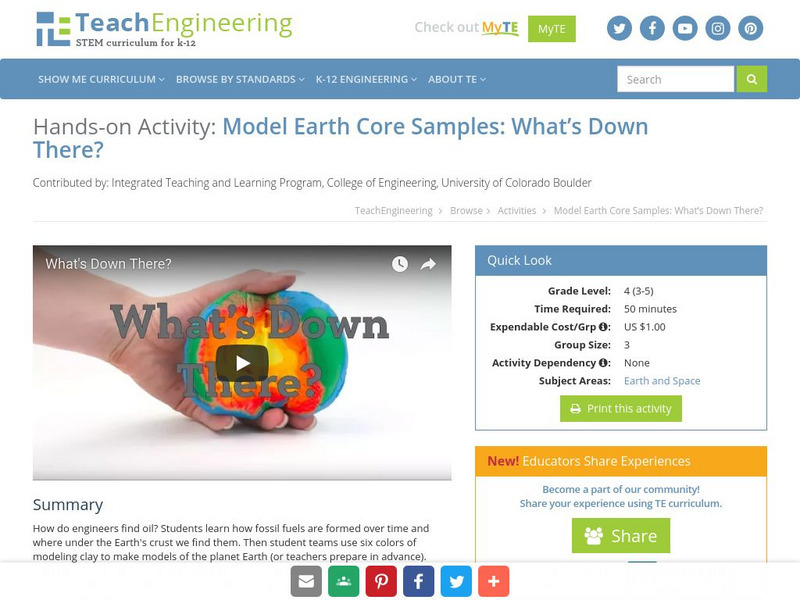Wikimedia
Wikipedia: Biomass
Learn about "biomass," organic non-fossil material of biological origin. Includes external links.
US Energy Information Administration
Eia: Iraq Energy Chronology
The Energy Information Administration provides a detailed chronology of events in Iraq related to energy. Chart begins with 9/17/80 when Iraq broke its treaty with Iran and continues to the present. Site seems to be updated periodically.
Nature Conservancy
The Nature Conservancy: Renewable Energy
In this lesson, students explore solar and wind power-two important renewable energy sources.
Georgia Department of Education
Ga Virtual Learning: Human Impact
In this comprehensive interactive tutorial you will learn how we can reduce our carbon footprint by using alternate energy sources.
US Environmental Protection Agency
Epa: Acid Rain: Students Site
Use this student portal to understand all you can about acid rain and its harmful effects. Modules for interactive games, stories, puzzles, vocabulary terms and links to other activities and experiments.
CPALMS
Florida State University Cpalms: Florida Students: Sustainability
Understand the definition of sustainability with this tutorial. Also, explore possible solutions to obtain sustanability in an environment.
Other
International Institute for Sustainable Development: Energy
Learn what the International Institute for Sustainable Development is doing in Canada to help ensure that clean, alternative energy sources are used in the future.
TeachEngineering
Teach Engineering: Dinosaur Breath
Through discussion and hands-on experimentation, students learn about the geological (ancient) carbon cycle. They investigate the role of dinosaurs in the carbon cycle and the eventual storage of carbon in the form of chalk. Students...
Annenberg Foundation
Annenberg Learner: The Habitable Planet: Energy Challenges
With this resource, users join investigators in the exploration of humans' use of and dependence on the many energy resources. Learn about new technologies such as carbon capture and sequestration as an alternative to reduce our carbon...
PBS
Pbs Learning Media: Global Warming: Graphs Tell the Story
Examine these graphs from the NOVA/ FRONTLINE Web site to see dramatic increases in the temperature of Earth's surface and greenhouse gases in the atmosphere.
University of Oregon
Museum of Natural and Cultural History: Rocks and Minerals: Everyday Uses
Click on the shelves in this virtual exhibition to learn about the many rocks and minerals that we use in our everyday lives.
National Geographic
National Geographic: Evaluating Other Energy Sources
A comprehensive lesson where students examine the different costs and benefits associated with renewable and nonrenewable sources of electricity. Includes a 22-question interactive module where they look at real-world data and images...
Science Museum, London
Science Museum: Climate Science Info Zone
Media-rich interactive explores Earth's climate, investigating what might be causing the climate to change and how to prepare for it in the future.
University of Illinois
University of Illinois: Illinois State Water Survey: Nitrogen Cycle: Human Impact on the Nitrogen Cycle
An overview of the impact of human activities on the environment and how those actions effect the nitrogen cycle.
Energy for Sustainable Development
Esd Bulgaria: Kids & Energy: Natural Gas
Learn how natural gas forms, how scientists find it beneath the Earth's surface, and how it is produced, stored, and transported.
Environmental Education for Kids
Eek!: Hot Summer Days Ozone Action
Easy to read and understand site from Environmental Education for Kids. Good and bad ozone explained and illustrated. Complete with glossary and Quizzler at the end.
Encyclopedia of Earth
Encyclopedia of Earth: Geology: Petroleum Crude Oil
Article explaining what petroleum crude oil is, its composition, how it is formed, sources, how it is recovered, different classifications, products made from it, and its history. Includes a chart showing statistical information for...
PBS
Nova: Car of the Future
In this activity, student teams research and develop a proposal to decrease the carbon footprint of their city's/town's public transportation system and then prepare a report that explains why their transportation plan is the best for...
Other
1 Sky: The Basics of Climate Change
Understand the basics of climate change and how it affects our planet. Learn ways to take action that can impact how our government deals with climate change
Other
Elmhurst College: Fractional Distillation of Crude Oil
Elmhurst College offers excellent but advanced information on the distillation of crude oil, including a crude oil distillation tower.
Scholastic
Scholastic: Study Jams! Science: Energy, Light and Sound: Natural Resources
A slideshow and a short quiz on natural resources, the difference between renewable and nonrenewable resources, and the impact humans have on the Earth's natural resources.
PBS
Pbs: Global Warming
This site provides an in-depth exploration from PBS into the international issue of global warming. Find out why scientists believe the global climate is changing, and explore actions certain governments have taken to prevent this...
TeachEngineering
Teach Engineering: What's Down There?
During this activity, students will learn how oil is formed and where in the Earth we find it. Students will take a core sample to look for oil in a model of the Earth. They will analyze their sample and make an informed decision as to...
Annenberg Foundation
Annenberg Learner: The Habitable Planet: Energy Lab
Try and meet global energy demands by using alternative energy sources while keeping the carbon levels in the atmosphere down to acceptable levels. Simulator includes a data table available for download for student records.
Other popular searches
- Fossil Fuels Experiments
- Formation of Fossil Fuels
- Fossil Fuels Activity
- Science Fossil Fuels
- What Are Fossil Fuels
- Dinosaurs and Fossil Fuels
- Environment Fossil Fuels
- Environment Fossil Fuels
- Depletion of Fossil Fuels
- Fossil Fuels (Labs)
- Cracking , Fossil Fuels
- Fossil Fuels Experements



